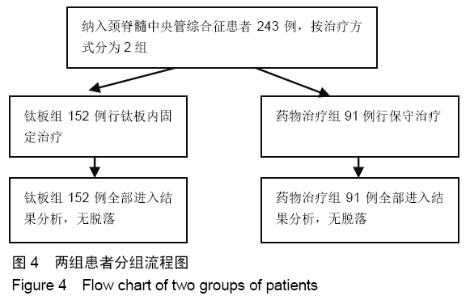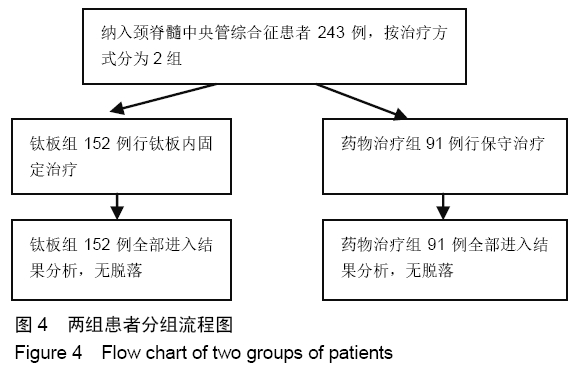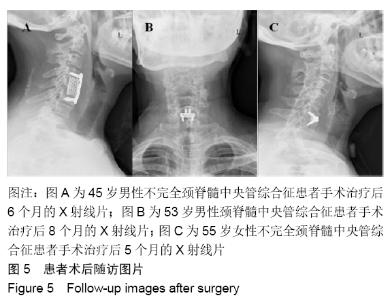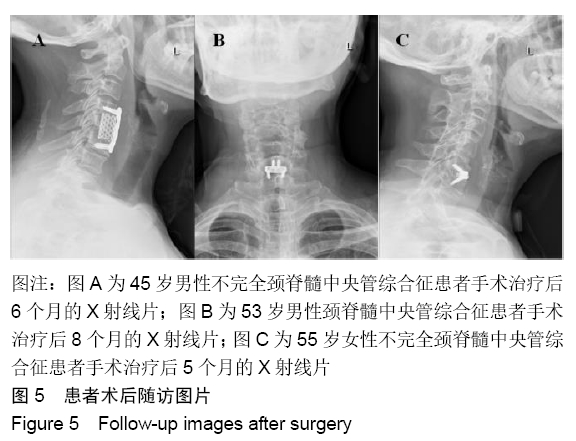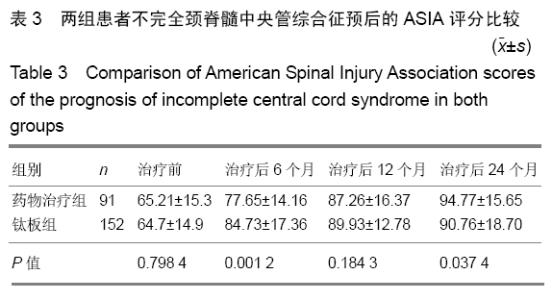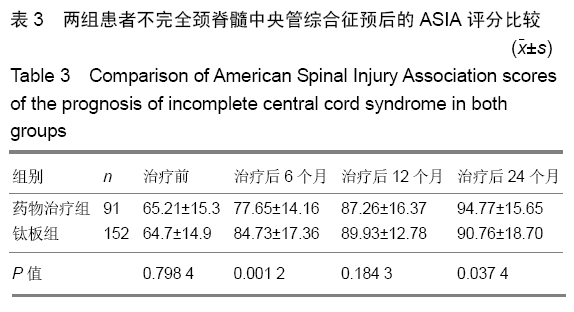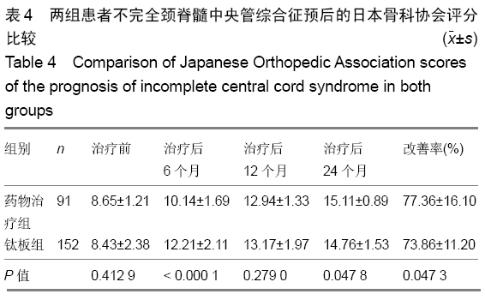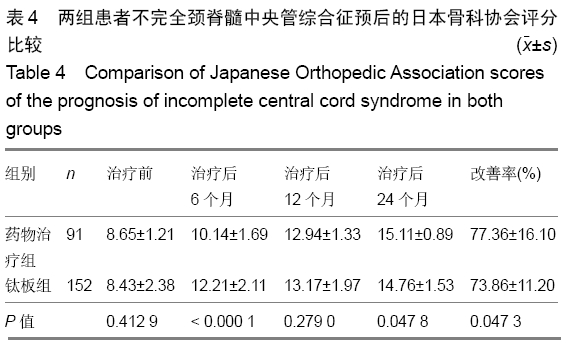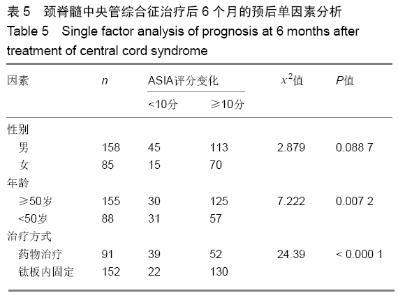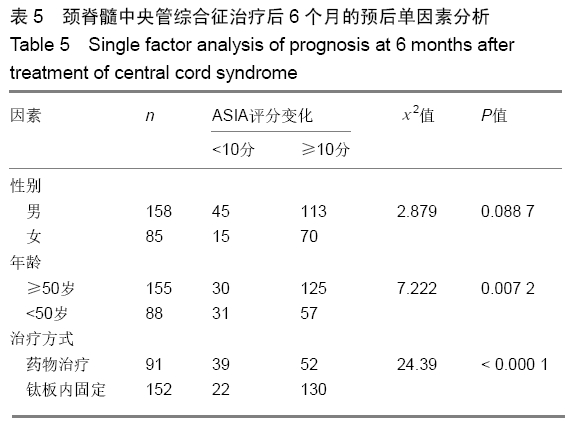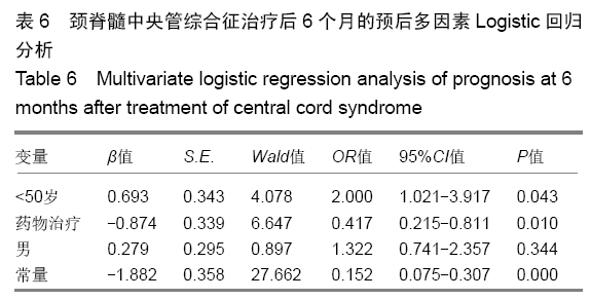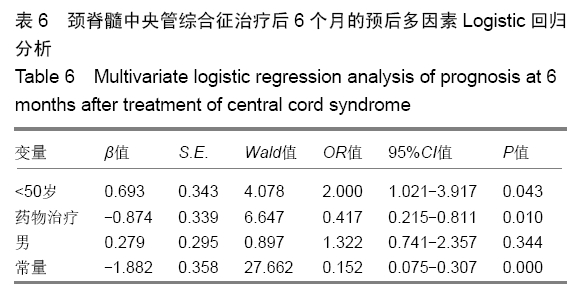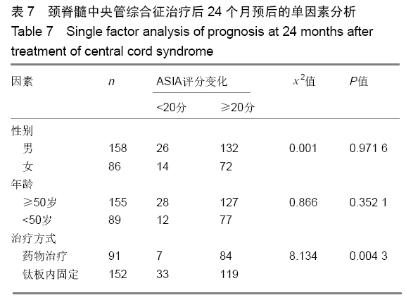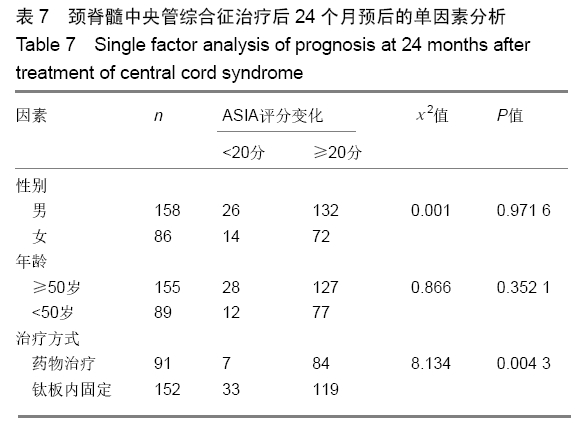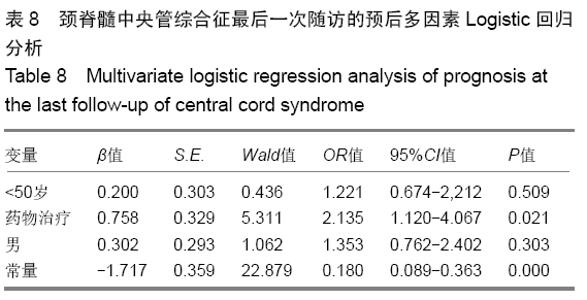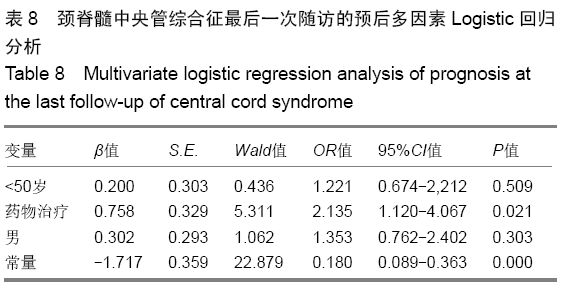[1] MCKINLE W, SANTOS K, MEADE M, et al. Incidence and outcomes of spinal cord injury clinical syndromes.J Spinal Cord Med. 2007;30(3):215-224.
[2] THOMPSON C, GONSALVES JF, WELSH D. Hyperextension injury of the cervical spine with central cord syndrome. Eur Spine J.2015;24(1):195-202.
[3] 高明勇,陶海鹰,卫爱林,等.急性成人颈段无骨折脱位型脊髓损伤非手术治疗与早期外科干预的对比分析[J].中国骨与关节损伤杂志,2015,30(1):7-10.
[4] 郑峰,许喆,张富财.高海拔地区急性颈髓损伤早期并发症多因素分析及治疗策略研究[J].中国现代医学杂志,2017,27(24):62-65.
[5] 尚小可,杨绿林.脊髓中央管损伤综合征术后康复治疗的疗效观察[J].宁夏医科大学学报,2012,34(8):817-819.
[6] 杨海源,唐鹏宇,罗勇骏,等.颈脊髓中央管综合征手术治疗预后影响因素分析[J].中国骨与关节损伤杂志,2016,31(7):673-676.
[7] YAMAZAKI T, YANAKA K, FUJITA K, et al.Traumatic central cord syndrome:analysis of factors affecting the outcome. Surg Neurol.2005;63(2):95-99.
[8] THOMPSON C, GONSALVES JF, WELSH D. Hyperextension injury of the cervical spine with central cord syndrome. Eur Sine J.2015;24(1):195-202.
[9] 邢泽军,马迅,马建平.伤椎置钉与否对导航引导下经皮椎弓根螺钉短节段固定治疗胸腰椎压缩骨折疗效的影响[J].中华创伤杂志,2018,34(5):388-394.
[10] 叶彬,陈令斌,刘融.脊柱脊髓损伤伴多发伤的损伤程度评估及治疗结果分析[J].颈腰痛杂志,2017,38(2):162-165.
[11] 李涛,陈兆军,贺明伟.脊柱脊髓损伤伴多发伤的损伤程度评估及治疗结果评价[J].当代医学,2019,25(10):14-16.
[12] YUE WM, TAN SB, TAN MH, et al. The torg–pavlov ratio in cervical spondylotic myelopathy: a comparative study between patients with cervical spondylotic myelopathy and a nonspondylotic, nonmyelopathic population.Spine.2001; 26(16):1760-1764.
[13] 李仁斌,余光书,林焱斌,等.依达拉奉干预脊髓损伤模型大鼠Ⅰ型和Ⅳ型胶原蛋白的表达[J].中国组织工程研究,2018,22(8): 1235-1240.
[14] CHEN TY, LEE ST, LUI TN, et al. Efficacy of surgical treatment in traumatic central cord syndrome. Surg Neurol. 1997;48(5):435-441.
[15] 李向涛.急性颈脊髓中央损伤综合征治疗体会[C]//2015临床急重症经验交流第二次高峰论坛, 2015.
[16] 刘明永,范伟力,柳峰,等.前路手术选择性治疗无骨折脱位的颈脊髓中央损伤综合征[J].局解手术学杂志,2010,19(5):365-367.
[17] 钱军,荆珏华,田大胜,等.无骨折脱位型中央管综合征的特点及手术治疗效果[J].中华创伤杂志,2013,29(11):1059-1062.
[18] AARABI B, ALEXANDER M, MIRVIS SE, et al. Predictors of outcome in acute traumatic central cord syndrome due to spinal stenosis. J Neurosurg Spine.2011;14(1):122-130.
[19] CHEN TY, DICKMAN CA, ELERAKY M, et al. The role of decompression for acute incomplete cervical spinal cord injury in cervical spondylosis.Spine.1998;23(22):2398-2403.
[20] 陈忠婧,仝淞铭,苏瑞超,等.脊髓缺血再灌注损伤对大鼠CaMKIV基因及蛋白表达的影响[J].中国现代医学杂志,2018,28(8):1-5.
|
